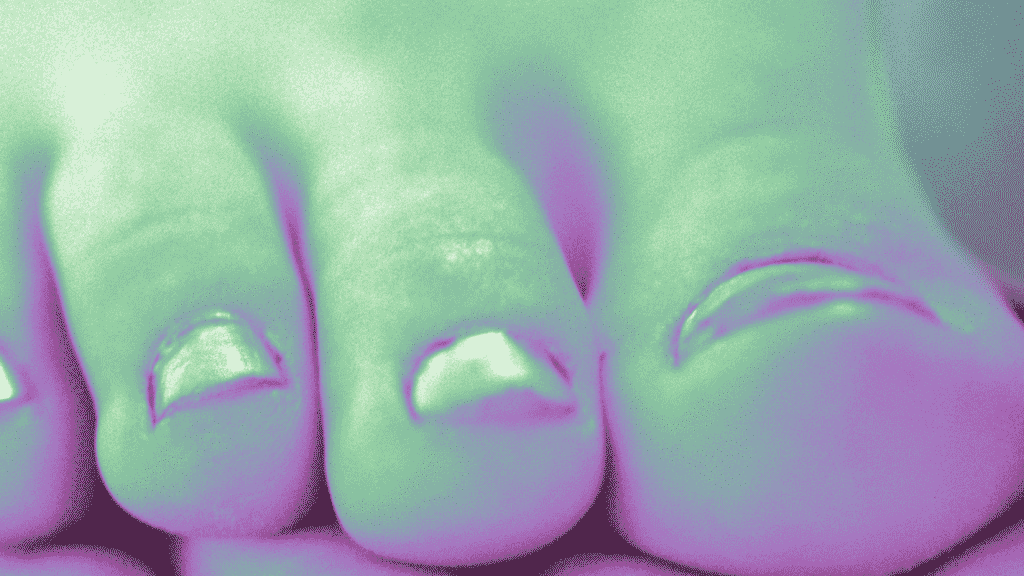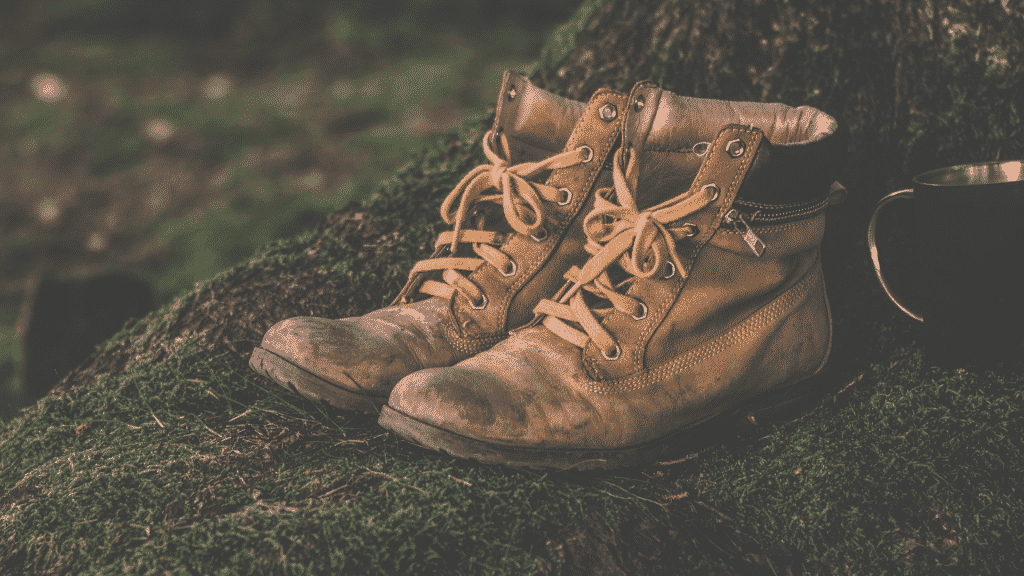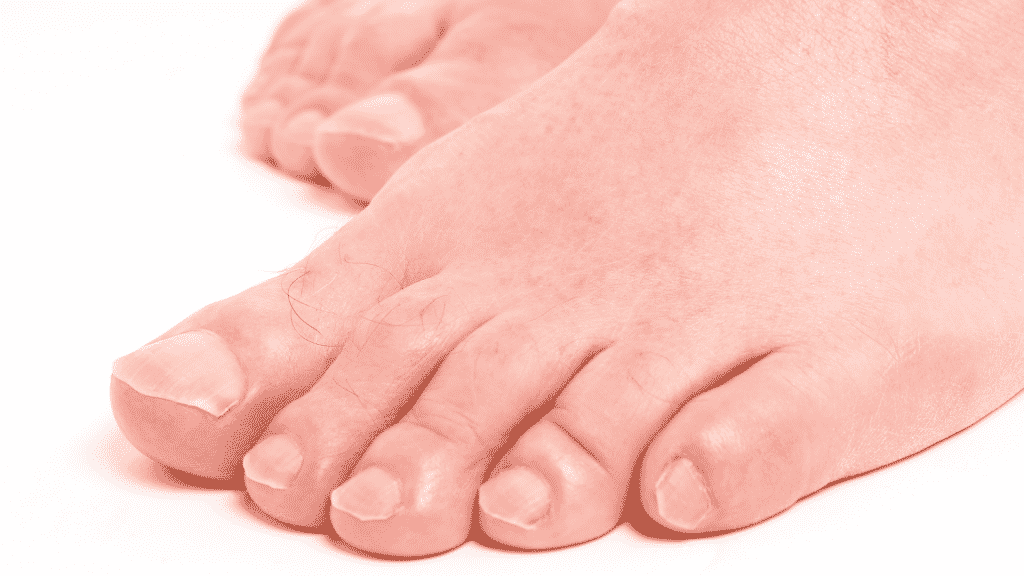In our day-to-day lives we all deal with a little bit of swelling and inflammation. Go on a long hike and what was moderate swelling can quickly turn into a problem. Do all hikers have to deal with a little bit of feet swelling? That’s a great question and one that’s easy to answer.
As you peel off those sweaty socks and stare at those oversized sausages you call toes, you probably wonder why you put yourself through all this torture. Swollen ankles might not be pretty, but every hiker will have to eventually deal with them. How you handle the situation will prevent more pain in the future.
How Common is Swelling?
A little bit of swelling is actually extremely common when doing any physical activity. Your feet, hands, legs
If you’re on your feet most of the day you’ll likely feel a little bit sore and notice a little bit of swelling. A little swelling is normal, but extreme swelling is not normal.
Is Feet Swelling Dangerous After a Hike?

Remember that I’m not a doctor and you shouldn’t take what I say as medical advice. I’m just a guy who spent way too much time on the trail and has dealt with swollen feet more times than I can count.
A little bit of feet swelling is actually very common among hikers. It doesn’t matter if you’re just starting out or have years of experience you’ll probably have a little bit of swelling. Spending so much time on your feet has to cause some damage over time.
It’s important to understand the difference between slight swelling(which is very common) and severe swelling. If you experience a lot of swelling that doesn’t go away quickly you should be concerned.
If
Get Some Bigger Shoes and Insoles

Hopefully you didn’t just go out and buy a brand new pair of hiking shoes only to find out that your feet swell up the second you head out on the trail. when buying hiking shoes should always buy half a size bigger than your normal tennis shoes.
Going up a half size will allow you to wear thicker hiking socks(these are what I wear) and some thick insoles. Back when I spent all my time loading trucks I found Timberland’s Anti-Fatigue Insoles which I absolutely love.
What Causes Foot Swelling
There are a lot of things that could cause feet swelling, but most of the time it’s caused by tight boots, poor diet, medical conditions, enlarged blood vessels and carrying excess weight. Shouldn’t take long for you to diagnose what’s causing your trouble.
- Tight Boots: By far the most common cause of feet swelling is compression caused by tight boots or socks. Make sure your boots and socks aren’t too tight. Buy boots that are half a size larger than recommended to accomodate light swelling. You should never see sock impressions on your skin at the end of the day. This either means your socks are too tight or you’re dehydrated both problems should be quickly addressed.
- Poor Diet: Excess salt in your diet is one of the main causes of feet swelling. To battle all that extra salt, your body starts storing more water. Obviously this causes swelling, but don’t worry drinking more water and less salt will quickly bring your fluid levels back to normal.
- Medical Conditions: Remember that I’m not a doctor, but there are a few medical conditions that are known to cause swelling. Abnormal swelling could be a sign of injury, heart/liver/kidney disease, diabetes, high blood pressure and deep vein thrombosis. You’ll want to see your doctor if you notice abnormal swelling especially when it’s only seen in one foot.
- Enlarged Blood Vessels: When you hike or workout your body breaks down muscle and repairs it by bringing in extra blood. All this extra blood flow is going to make your blood vessels and muscles swell slightly. A few hours after you take your socks/shoes off to relax this swelling should start to go down and return to normal.
- Excess Weight: Gravity is a cruel mistress and it punishes those of us that carry around a little extra weight. Bearing a heavy load will always cause fluid to pool up around your feet and ankles. Reducing your weight through fat loss or shedding gear should help reduce the stress caused on your feet.
What if One Foot is Swollen?
Swelling is relatively common, but it should look consistent throughout your body. If one of your feet looks way worse than the other it’s time to call the doctor. Most of the time this indicates that you have some type of underlying medical condition.
Swelling should look uniform from one foot to the other. Most of the time this means that you have a slight injury. Sprained/strained ankles and broken bones are probably the most common injury. Not all injuries are accompanied by a sharp pain. Some develop slowly over time.
Just remember to have some common sense and don’t ignore what could be a serious circulation problem. Go talk to a doctor so he can run a few tests. You’ll probably be back out on the trail in no time.
Prevent Swollen Feet During Your Hike
After we buy our first pair of hiking boots most of us completely forget about our feet. We treat them like an afterthought and rarely do anything to make them feel better.
Just think about the last time you thought about the well-being of your feet? It was probably after a long trip at an amusement park when you could barely walk back to your car.
Your feet are trapped inside a tight boot all day gasping for fresh air. by the end of the day it’s no surprise that they’ll be a little bit swollen. Here are a few ways to prevent swollen feet on your next hike.
Tips to Prevent Swollen Feet
- Relax Your Toes: Make an effort to relax your toes throughout your hike. A lot of us Jam our feet in overly tight socks and clench our toes as we walk down the trail(especially when walking
down hill ). - Stretch Your Toes: Every time you take a short break make sure you give your toes a nice wiggle. A quick stretch every time you take a break is all you really need.
- Change the Way You Lace: Changing up the way you lace your boots will prevent a lot of feet problems throughout a long hike. Your laces should be tight without constricting your movement.
- Use Trekking Poles: For years I avoided buying trekking poles. I always thought it was just one more thing to carry. Wasn’t until my dad bought me a set of Black Diamond Poles following a knee injury that I realized what I was missing. It’s amazing how much pressure they take off your ankles and knees when hiking uphill.
How to Reduce Swelling After Your Hike

There are so many things you can do to reduce swelling at the end of a long day. Just getting off your feet for a few hours is a great start. The following tips should help reduce swelling.
- Raise Up Your Feet: Just “kick back and relax” at the end of a long day. Try to elevate your feet a little bit raising them above your heart. If you’re at home head to your favorite recliner and get your feet up. On the trail
setup camp and relax for a few hours. Raise your feet up on your pack or sleeping bag and let gravity do its job to reduce swelling. - Drink Plenty of Water and Some Snacks: Dehydration and excess sodium are common causes of feet/ankle swelling. When your body tries to fight off dehydration it holds onto all the fluid it can find.
- Ditch The Jewelry: Most men aren’t going to be wearing ankle/toe jewelry(at least I Hope they aren’t), but women love ankle bracelets for some reason. Take off all your jewelry so you don’t have anything digging into those swollen
cankles . - Find a Cold Compress: Try to apply something cold to your feet/ankles as soon as you notice swelling. Backpackers probably aren’t going to be carrying ice, but on a short day
hike you might have some ice in your cooler. Cheap disposable cold packs are an excellent addition to your first aid kit or you could use some chilly stream water. - Eat Less Salt: Try to figure out how much salt you’ve had over the last couple days. Has your diet changed significantly over the past couple days? Did you stop to get some fast food or eat a heaping portion of Chinese food the night before? Salt could be what’s causing you to retain fluids.
- Loosen Up Your Gear: Could something be causing a circulation issue? That new piece of gear that you couldn’t live without could just be cutting off blood flow to your extremities. Check to make sure your straps aren’t too tight and your shoes/socks aren’t cutting off circulation.
- Lose Some Weight: If after all these tips your feet are still swelling after every hike you might need to lose a little bit of weight. Try to get out and get more exercise. Even 20 minutes per day on the elliptical or treadmill will significantly improve your cardiovascular health.

